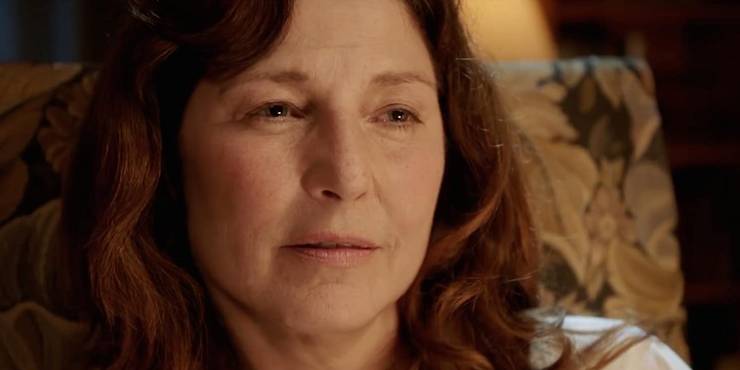Get Out: 15 Hidden Details Everyone Completely Missed

Get Out was arguably the best horror film of 2017. It was Jordan Peele’s directorial debut and due to its notable success and impact on the genre, the brilliant director is now known as a modern-day master of horror. Get Out was equal parts horror, political commentary/comedy, which made for a unique, thoroughly entertaining film.
The Oscar-winner is an undeniably thrilling experience, but it also holds several hidden details and meanings that could only be noticed upon multiple watches. Jordan Peele loves to hide little Easter eggs in his films, and there are several brilliant, interesting, and even terrifying hidden details to be dissected and examined in Get Out. Let’s take a look at some of the major ones.
Updated on October 27th, 2021: by Moon Abbott: To this day, Get Out remains one of the most influential horror films of recent years. Because of the many intricacies in its story, production design, and other cinematic elements, Get Out can be enjoyed multiple times and audiences can pick up on things they might have missed upon first, second, even third watch. Jordan Peele likely hid countless hidden messages within the Get Out to be discovered over time, so it’s always fun to look back to see which ones might have been looked over.
The Translation Of The Opening Song

Get Out had an eerie, unforgettable soundtrack that suited its tone perfectly. The unsettling music that plays primarily at the beginning and the end of the film is indecipherable to English-speaking audiences because the singing is in Swahili. The song is called Sikiliza and it is completely unnerving.
This song is more than just creepy, though; it’s a warning for Chris. The literal translation of the lyrics played in Get Out is as follows: “Brother, listen to the ancestors – run!” The song sets the tone for the film and for the terrifying journey that Chris is about to embark on, making it one of the best uses of songs in a horror movie.
The Shining Parallels

Jordan Peele has publicly stated on multiple occasions that The Shining is the director’s favorite horror film. This is definitely not an unpopular pick, as the 1980 flick is widely regarded as the best horror film ever made. But it’s interesting that Peele has confirmed Stanley Kubrick’s masterpiece to be his favorite horror movie, as there are several references to it scattered throughout both Get Out and his sophomore film Us.
Get Out contains many film references, but The Shining was the most referenced. A prominent example is the moment where Andre describes being lost in the suburbs as feeling like being in a hedge maze.
Jordan Peele’s Rabbit Obsession/Fear

After the notable presence that rabbits had in Us, questions began to arise about Jordan Peele’s slight obsession with the animal. In an interview, the writer/director stated that rabbits “terrify” him. In Us, the adorable furballs represented innocence and synchronicity in a sense. But a lesser-known fact is that rabbits were also featured in Get Out but in a less obvious way.
The first song played in the film is “Run Rabbit Run.“ It is the background music to Andre’s death/kidnapping as he wanders through the suburbs.
The Dead Deer Is A Bad Omen

The first overt jumpscare in Get Out is the moment when Rose hits a deer during the drive to the Armitage’s family home. This scene was also the first time that we see someone being racist toward Chris; the cop that arrives insists on seeing Chris’ license even though he wasn’t even the one driving.
The deer in Get Out symbolizes the moment that things started going downhill and the future began to appear dark and menacing. It’s a bad omen and Chris’ warning song even plays in the background during the scene.
H.P. Lovecraft References

H.P. Lovecraft is referenced in many subtle ways throughout Get Out. Jordan Peele has clearly always had a love for the classic horror novelist, far before the creation of his series Lovecraft Country.
The most obvious reference to Lovecraft in the film is the family’s last name. Armitage is also the name of the main character in the H.P. Lovecraft story The Dunwich Horror. Fellow H.P. Lovecraft fans might want to watch the twisted horror movie more than once to try to pick up on the elusive references.
Rose Dropping Hints

Rose’s facade was a hard one to crack, and the reveal of her true motives and identity comes as a shock upon the first viewing of Get Out. But upon a closer look, Rose does drop several subtle hints to her sociopathic side throughout the film.
One significant example was that she shows no signs of sympathy when she hits and kills the deer early on in the film, while Chris clearly reacts with distress and remorse. Observant viewers might have noticed that this foreshadowed the movie’s plot twist at the end.
The Significance Of Chris’ Camera

One of Chris’ main character traits was that he was a photographer. Because of this, he was established as very observant, which is why he eventually figured out the Armitage’s true intentions.
His skill with the camera goes deeper than that, though. Chris captures images so others can see the world through his lens. This is reminiscent of the white people who live inside of the Black victims, quite literally seeing through the eyes of another. This is heavily emphasized when Chris has a conversation with Jim Hudson, the blind photo critic who seeks to live in Chris’ body.
Georgina’s Slip Up

Georgina and Walter are “hosts” for Rose’s grandparents, and out of everyone — including Andre — Georgina seemed to slip up the most. Her true identity often came through, albeit in small, easy-to-miss glimpses.
It’s been speculated that the moment in which Georgina stumbles while pouring Chris and the Armitage family drinks was brought on by Rose’s mother momentarily clinking a spoon to her glass. Missy has the ultimate control due to her hypnosis techniques and this small scene is an example of that.
Missy’s Silver Spoon Metaphor

As mentioned, one of Georgina’s slip-ups occurred when Missy tapped her spoon onto her glass early on in the film during the first meal Chris had with the Armitages. Missy was often seen with this silver spoon, and it wasn’t only to represent her control over the sunken place.
A silver spoon is commonly representative of wealth and privilege. This helps emphasize the themes of racial inequality as the Armitages have always had the upper hand in life because they are white and well-off.
Rose’s Cereal And Milk Symbolizes Segregation

After Chris discovers the truth about the Armitages, Rose almost immediately moves on to scouting her next victim. In this scene, she eats Froot Loops cereal and milk, except they are separated instead of mixed together like a typical bowl of cereal would be.
While this makes for a funny moment in the film, it likely represents something much more grim. Because Froot Loops are colorful and milk is white, the separation of the two seemingly symbolizes the American Segregation era when people of color were forced to use different public amenities than white people.
Walter Was Running Because Dean’s Father Was An Olympian

One of the most famous, unforgettable scenes in Get Out was the moment when Walter is running laps in the middle of the night. Chris discovers this anomaly and Walter proceeds to run straight toward him, veering off at the very last second. The scene is shot in a style that portrays Walter running directly at the camera, which makes it all the more memorable.
A deeper look into the reason Walter was running makes a lot of sense; Dean’s father — a former Olympic runner who once lost to Jesse Owens — was inhabiting Walter’s body, which explains the late-night exercise sessions.
Hidden Lobotomy Scars

The victims of the Armitage family that are present in Get Out were Georgina, Walter, and Andre. Since the process of inserting someone else’s brain into the victim’s head and sending them into the Sunken Place was achieved via lobotomy, the victims would obviously have evidence of it, yet none of this is ever visible.
Georgina, Walter, and Andre all had something in common, though; they all wear something on their head that hides their lobotomy scars. Walter/Dean’s father wears a baseball cap, Andre/creepy old white guy wears a straw hat, and Georgina/Dean’s mother is constantly fixing her hair to hide the scar.
Chris Had To Pick Cotton To Save Himself

When Chris was tied to a leather chair as the Armitages were preparing for his lobotomy, the video playing on the TV in front of him was supposed to put him in a trance. It didn’t, though – he managed to escape.
The only reason Chris accomplished this was by pulling the cotton out of the arm of the chair and stuffing it into his ears, preventing him from hearing the entrancing spell on the TV. This seems to be a clear reference to the era of slavery in America in which mass amounts of enslaved Black people were forced to pick cotton by hand.
Metaphorical Meaning Of The Sunken Place

The Sunken Place becomes such a terrifying aspect of Get Out, and the scene in which Missy sends Chris into a hypnotic state where he is slowly plunged into the depths of consciousness was one of the most immersive in the entire film.
Jordan Peele explained that the Sunken Place was a metaphor for the marginalization of Black American people. The director stated, “No matter how hard we scream, the system silences us.”
“A Mind Is A Terrible Thing To Waste.”

The Armitages’ extremely disturbing PSA that Chris is forced to watch before they try to take his brain explains the origin of the family’s “mission” and why they do what they do. The slogan they used to justify the horrible act was, “A mind is a terrible thing to waste.”
Incidentally, the United Negro College Fund has been using this exact slogan for over three decades, so this is most likely a commentary on white people appropriating from Black culture.
About The Author

















